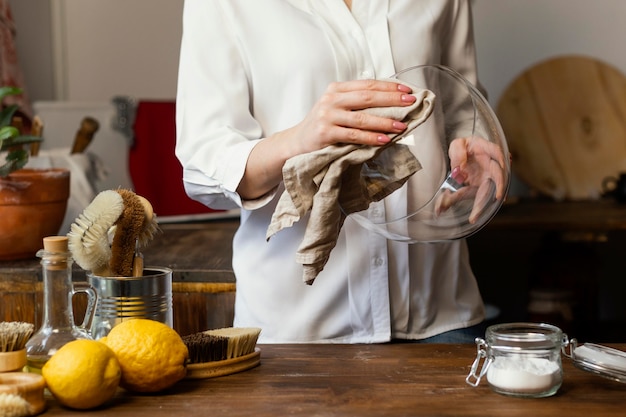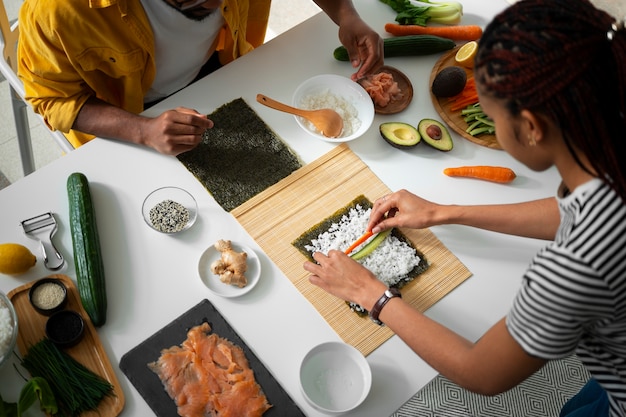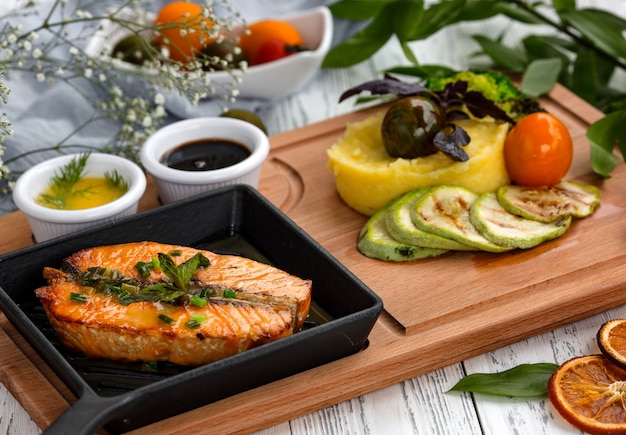(Part 1) The Ultimate Salmon Bake Guide

Understanding the Basics: Temperature and Time
The oven is our trusty sidekick for this culinary adventure. We'll be baking at 350 degrees fahrenheit (175 degrees Celsius). This gentle heat ensures even cooking and prevents the salmon from drying out. Now, here's where things get a little trickier: bake time depends on the thickness of your salmon. A skinny fillet will cook faster than a thick, juicy slab.The Golden Rule: Timing by Thickness
Let’s break it down with this handy table:
| Thickness (inches) | Bake Time (minutes) |
|---|---|
| ?? inch | 12-15 |
| 1 inch | 18-20 |
| 1 ?? inches | 25-30 |
| 2 inches | 30-35 |
This table provides a solid starting point, but remember, it's just a guide. Every oven has its quirks, and salmon can vary in density. That's where our next secret weapon comes in…
The Fork Test: Your Salmon Savior
The fork test is a must-do! Gently poke your salmon with a fork. If it flakes easily, it's ready. If it feels firm or offers resistance, it needs more time. And if it crumbles apart, well, you've overdone it. It's all about that delicate balance.(Part 2) The Art of Seasoning

Simple is Best
When it comes to salmon, I believe in keeping things simple. Allow the natural flavor to shine! My go-to seasoning is a generous pinch of salt and black pepper. It's a classic combination that never fails.Spice it Up
But if you’re craving something a bit more adventurous, let’s explore some flavor combinations that elevate your salmon to new heights.- Lemon and Herbs: A squeeze of fresh lemon juice and a sprinkle of fragrant herbs like dill, parsley, or chives add a vibrant, citrusy touch.
- Garlic: A few cloves of minced garlic will infuse your salmon with a delicious aroma and depth of flavor.
- Smoked Paprika: This adds a subtle smokiness that complements the richness of the salmon beautifully.
- Chili Flakes: For those who love a bit of heat, a sprinkle of chili flakes will give your dish a fiery kick. Just be sure to add them in moderation, unless you're going for a truly spicy experience!
Don’t Forget the Skin!
The skin is often overlooked, but it’s a crucial part of the salmon. It crisps up beautifully in the oven, adding a delightful texture. Leave it on and bake it with the rest of the fillet. Just score the skin with a knife a few times before baking to prevent it from curling.(Part 3) The Secret to Perfect Skin

The Skin Factor
crispy salmon skin is a game-changer. It's a culinary triumph. But achieving that perfect crunch requires a bit of finesse. I've spent countless hours experimenting with different techniques, and I've learned a thing or two along the way.Bake it High
The key to a crispy skin is heat. Baking the salmon at 400 degrees Fahrenheit (200 degrees Celsius) for the last few minutes of cooking really does the trick. It creates a beautiful, golden-brown crust without overcooking the delicate flesh.(Part 4) The Perfect side dishes
Roasted Vegetables: A Match Made in Heaven
Salmon and roasted vegetables are a culinary match made in heaven. The rich, oily salmon pairs beautifully with the sweet, caramelized flavors of roasted vegetables. Here are some of my favorite combinations:- Asparagus and Lemon: The bitterness of asparagus is perfectly balanced by the tangy lemon juice, creating a bright and refreshing side dish.
- Broccoli and Garlic: The garlicky aroma infuses the broccoli and beautifully complements the salmon, creating a savory delight.
- sweet potatoes and Rosemary: The sweetness of the sweet potatoes brings a touch of warmth, while the rosemary adds a savory depth, creating a truly satisfying combination.
Simple Salads: A Refreshing Twist
For a lighter touch, I love to pair my salmon with a simple salad. A classic green salad with a tangy vinaigrette dressing or a creamy avocado salad will add a refreshing contrast to the richness of the salmon.(Part 5) delicious salmon Variations
Glazed Salmon: A Sweet and Savory Treat
For a special occasion or a dinner party, elevate your salmon with a glaze. A honey-soy glaze is a classic for a reason. The sweetness of the honey balances perfectly with the savory notes of the soy sauce, creating a delicious and irresistible flavor. To make the glaze, simply whisk together honey, soy sauce, a touch of ginger, and a clove of minced garlic. Brush the glaze over the salmon halfway through baking. It will caramelize beautifully, giving your salmon a rich, glossy finish.lemon-dill salmon: A Summer Classic
This light and refreshing recipe is perfect for a warm summer evening. Combine fresh lemon juice, dill, salt, and pepper, and spread the mixture over the salmon. Bake as usual, and serve with a side of quinoa or rice. The lemon and dill add a bright, fresh flavor that will make your taste buds sing.Spicy Salmon: A Kick of Heat
If you prefer a little heat with your salmon, get ready to spice things up! Add some chili flakes, cayenne pepper, or a dash of hot sauce to your seasoning. It'll give your dish a satisfying kick and add a touch of fiery deliciousness. Just be sure to adjust the amount of spice to your liking, especially if you're sensitive to heat.(Part 6) FAQs
1. Can I bake salmon from frozen?
Yes, you can bake salmon from frozen, but it will take a bit longer. Simply add about 10-15 minutes to the bake time. However, thawing the salmon completely before baking will ensure more even cooking. Just place it in the refrigerator overnight or use a cold-water bath for a faster thaw.2. What happens if I overcook the salmon?
overcooked salmon is a culinary tragedy. It will be dry, flaky, and lose its delicious, moist texture. To avoid this, use a meat thermometer. Salmon is done when the internal temperature reaches 145 degrees Fahrenheit (63 degrees Celsius).3. Can I bake salmon in foil?
Yes, baking salmon in foil is a great way to keep it moist and tender. Simply place the salmon in a piece of foil, fold it over, and bake. The foil traps the steam, creating a delicious, steam-baked salmon. Just be sure to leave a small opening in the foil to allow some steam to escape.4. What can I do with leftover salmon?
Leftover salmon is a culinary treasure! It's incredibly versatile and can be incorporated into countless dishes. Use it in salads, sandwiches, pasta dishes, or even a quiche. It's also fantastic for making salmon patties or adding a burst of flavor to your breakfast omelets.5. How do I store leftover salmon?
Store leftover salmon in an airtight container in the refrigerator for up to 3 days. For longer storage, you can freeze it for up to 3 months.(Part 7) Tips for perfect salmon Every Time
1. Pat it Dry:
Before baking, pat the salmon dry with paper towels. This helps to ensure the skin crisps up nicely and creates a beautiful, golden-brown crust.2. Don’t Overcrowd the Pan:
If you're baking multiple salmon fillets, make sure there’s enough space between them. This allows for even cooking and prevents the fillets from steaming instead of baking.3. Flip it at the End:
For a truly crispy skin, flip the salmon over for the last few minutes of baking. This allows the skin to get that extra touch of heat and create a satisfying crunch.4. Watch the Doneness:
Always check the salmon’s doneness with a fork before you remove it from the oven. It should flake easily.5. Let it Rest:
Once the salmon is cooked, let it rest for a few minutes before serving. This allows the juices to redistribute and prevents the salmon from becoming dry.(Part 8) Final Thoughts
Baking salmon is a simple, yet rewarding, cooking experience. With this guide, you'll be equipped to create delicious, perfectly cooked salmon every time. Experiment with different seasonings, explore creative side dishes, and enjoy the journey of discovering your own perfect salmon bake. And remember, it's all about having fun in the kitchen!Everyone is watching

Corn on the Cob: The Ultimate Guide to Perfectly Cooked Ears
Healthy MealsAh, corn on the cob. Just the name evokes images of sunny days, barbecues, and that sweet, juicy flavour that ...

Perfect Pork Roast Oven Cooking Time: A Guide to Delicious Results
Healthy MealsThere's something truly satisfying about a perfectly roasted pork. The aroma alone is enough to make your mout...

Ham Cooking Time: How Long to Bake, Smoke, or Boil a Delicious Ham
Healthy MealsAh, ham. It's a classic, isn't it? A real crowd-pleaser, especially around holidays. And when done right, it'...

Scallops: The Ultimate Guide to Perfect Cooking
Healthy MealsAh, scallops. Those delicate, sweet, and utterly delicious morsels of the sea. They hold a special place in my...

Spaghetti Squash: The Ultimate Guide to Cooking and Serving
Healthy MealsRemember that time you saw spaghetti squash at the supermarket, looking all bumpy and strange, and thought, "W...
